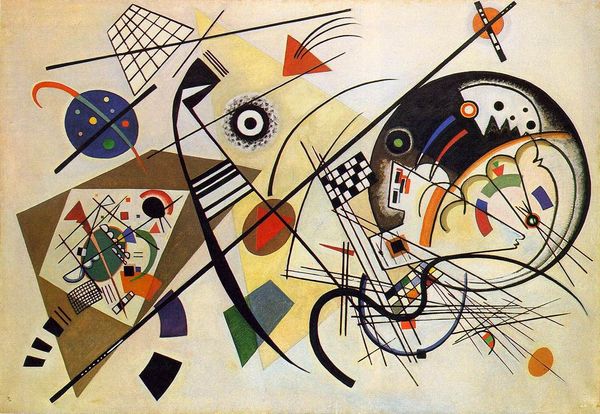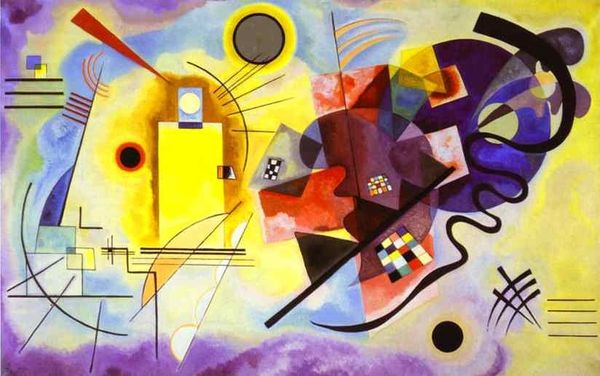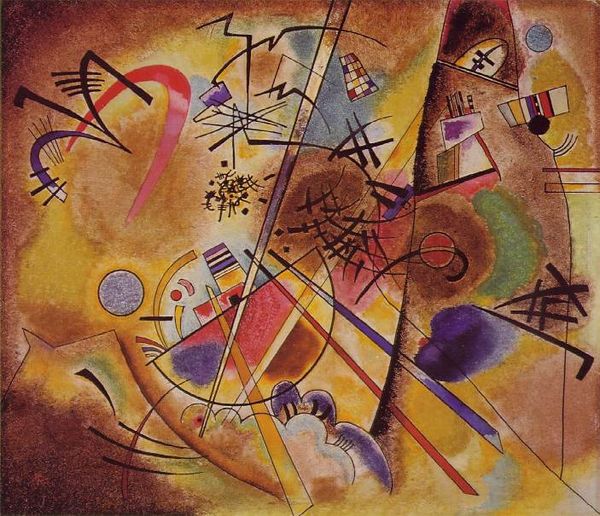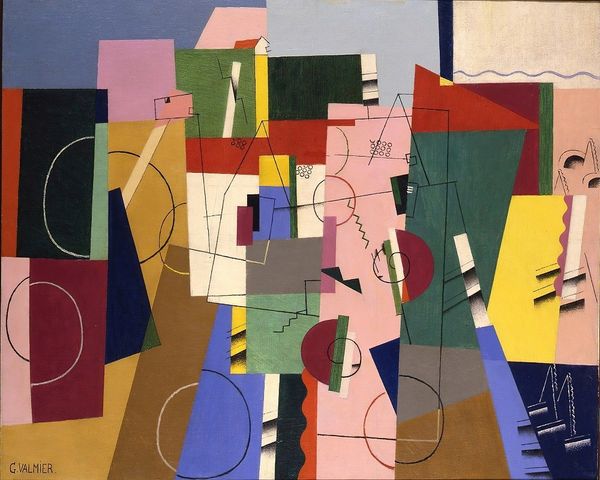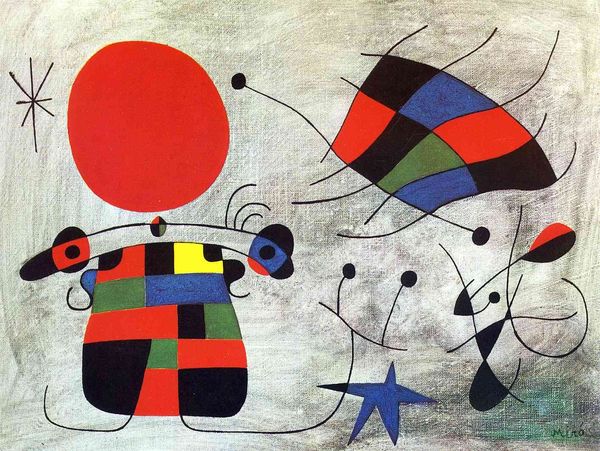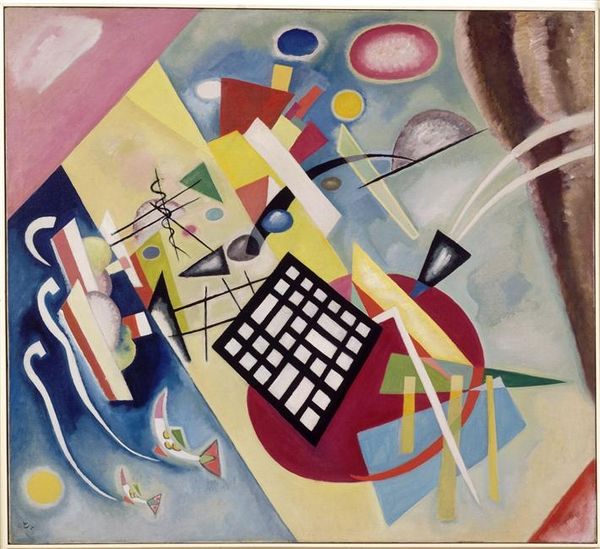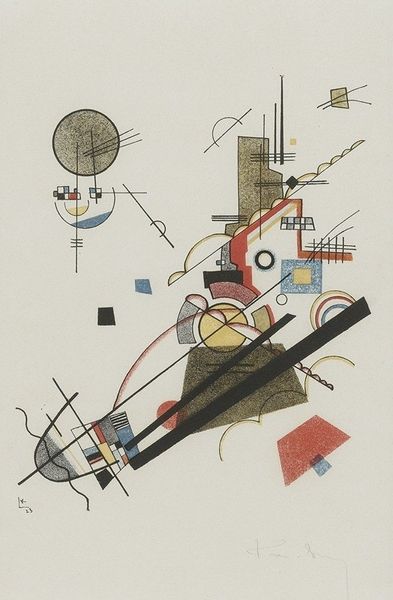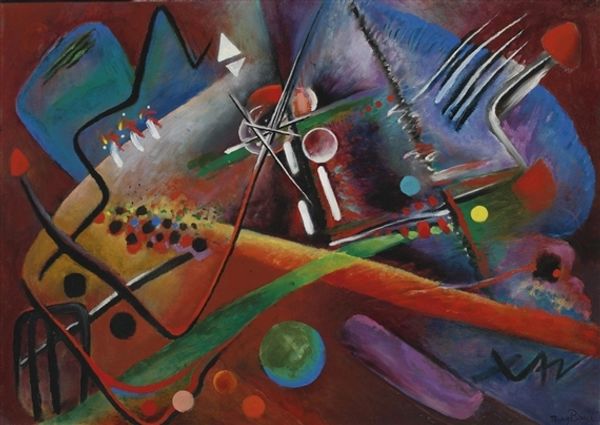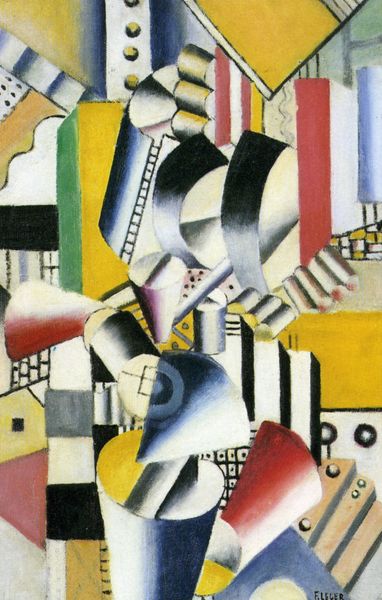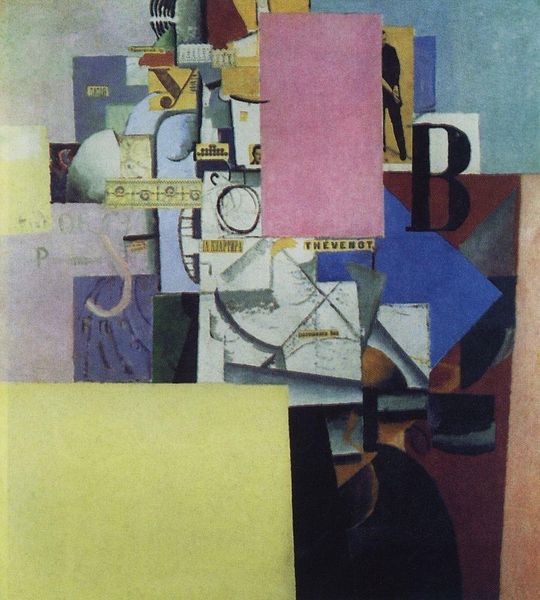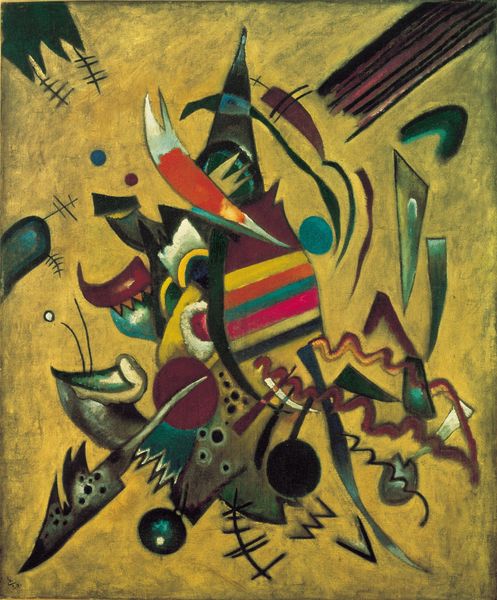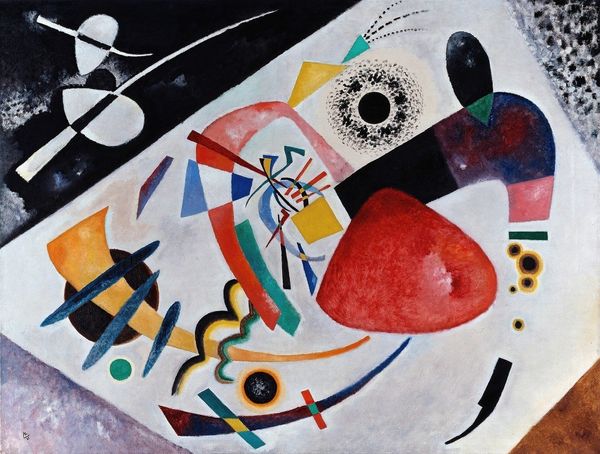
Dimensions: 140.34 x 200.66 cm
Copyright: Public domain
Art Historian:Editor: So here we are with Kandinsky's "Composition 8," created in 1923 using acrylic paint. It's incredibly vibrant, full of geometric shapes floating across the canvas. The use of so many colors seems almost chaotic but also strangely harmonious. What do you make of it? Art Historian:Well, focusing on the material conditions, it’s interesting to consider the shift towards geometric abstraction in the Bauhaus. Kandinsky was teaching there at the time. Editor: That's true! What resources or technological innovations might have impacted this style? Art Historian:Think about the standardization and mass production gaining momentum then. New materials perhaps, impacting color and paint consistency. But also, it makes me wonder about his use of acrylic paint. Can you imagine this being conceived as craft rather than art? The division seems arbitrary here. The very labor to generate those forms may have shifted the entire piece conceptually Editor: Absolutely. It challenges the idea of art being purely about individual expression, bringing in these larger societal factors, even consumerism to art itself. It changes our perception, knowing his material use changes what we may think this piece could be, whether elevated craft or abstracted commentary. Art Historian: Exactly. And considering those historical production values allows a richer and a deeper reflection, a richer material view. We look and feel at the materials we consume. What about you? Does understanding this influence your interpretation? Editor: It definitely makes me rethink the intent behind such a seemingly abstract work. It reveals levels that are always operating behind an artists canvas, which adds another whole context. Thanks, I'll look at this piece in an new light going forward.
Comments
No comments
Be the first to comment and join the conversation on the ultimate creative platform.

